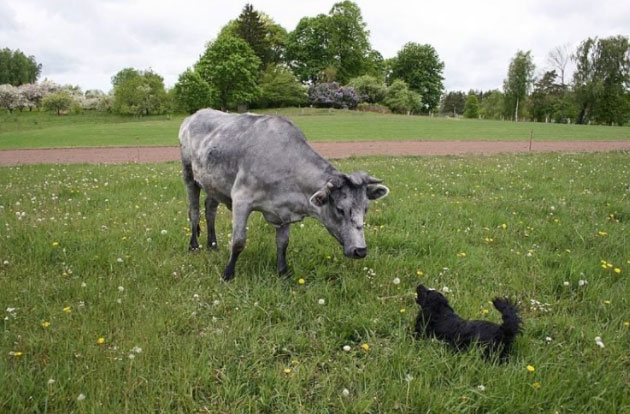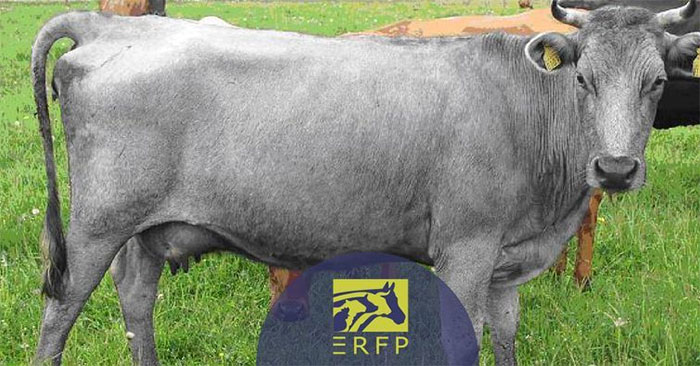The story of the strange green cows in Latvia
Once close to extinction, the green cows have made a comeback in the past few decades as an irreplaceable cultural icon of Latvia.
Originally appearing only on the Baltic coast in the Kurzeme region, cows with light green or dark skin have been grazing throughout the Latvian countryside.

The unique breed of cow is considered a symbol of national identity.
Previously, they were almost extinct, with only a few specimens remaining after the destruction process. Even in 2000 there were only 18 green cows in Latvia, but today they number about 1,500. The unique breed of cow is considered a symbol of national identity.
Legend has it that blue cows get their color from the sea, but in fact they are born beige and gradually change color over time. Their coat soon turns blue and darkens over the years.
The pigment that gives cows a dark green color also affects their meat. Beef has a particularly dark color. Latvian green cows produce less milk, averaging 5,000 liters per head per year, but their milk is healthier and more nutritious.

Strong, independent and robust green cows can live year-round outdoors.
The fact that people began to replace Latvian green cows with conventional cows that produce more meat and milk is one of the reasons why green cows are almost extinct.
Fortunately, they were saved. In the 1970s, Latvian playwright Gunars Priede launched the play 'The Blue One', a resounding success that brought the Latvian green herd back into the public consciousness and became a symbol of identity. ethnic. In 2006, the Green Cow Association was established, with the main goal of saving this strange breed.
Currently, rural innkeepers buy green cows as a way to attract tourists, while farmers often bring blue cows into the herd because of its strong maternal instincts.
Arnis Bergmanis, head of the Ciruli animal park in Kalvene village, said: 'If a calf of any color has lost its mother or is separated, the blue cow is adopted and raised as her own. they".
According to Daiga Simkevica, head of the Green Cow Association, they also stand out for their ability to thrive in extreme conditions. Blue cows grow on the coast, representing a powerful ability, able to live off of twigs of shrubs and dunes, which are considered inedible by other livestock.
"The strong, independent and robust green bull can live year-round outdoors, even during winter frosts, which many other breeds cannot tolerate," says Daiga Simkevica.
- Video: Whirlwind in Latvia
- Rare breeds are both strange and strange
- US research creates heat-resistant cows for future food
- Column light mystery in the sky of Latvia
- Cowsitis and reproductive cows
- Cows with formal names will give a lot of milk
- New Zealand saves the herd of cows that are stuck on small mounds after the earthquake
- 'Huge green tree' between Paris
- Application of science and technology increases the quality of cows
- Students protect rare sea cows in Phu Quoc
- Netizens stir up the calves of the coconut skull in Thanh Hoa
- Dairy technology: Need grassland and clean water!
 Animal 'suffering' after hibernation
Animal 'suffering' after hibernation Why do goats climb well?
Why do goats climb well? Scientists were surprised to see chimpanzees eating turtles
Scientists were surprised to see chimpanzees eating turtles Giant catfish died deadly due to drought in Thailand
Giant catfish died deadly due to drought in Thailand